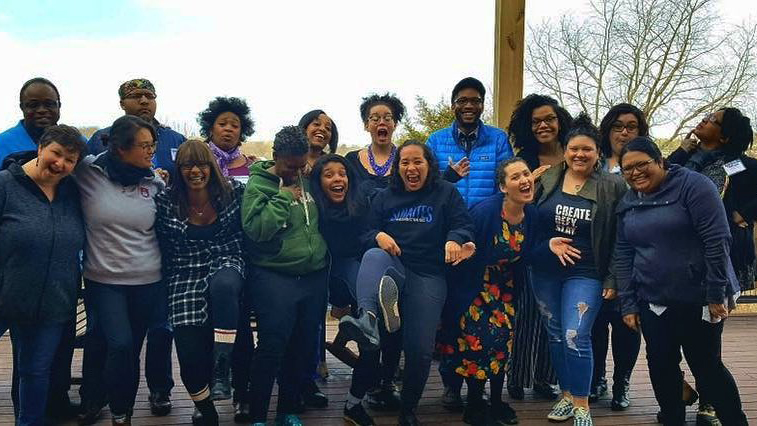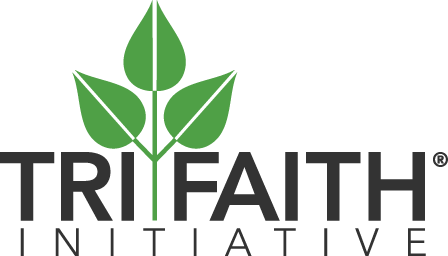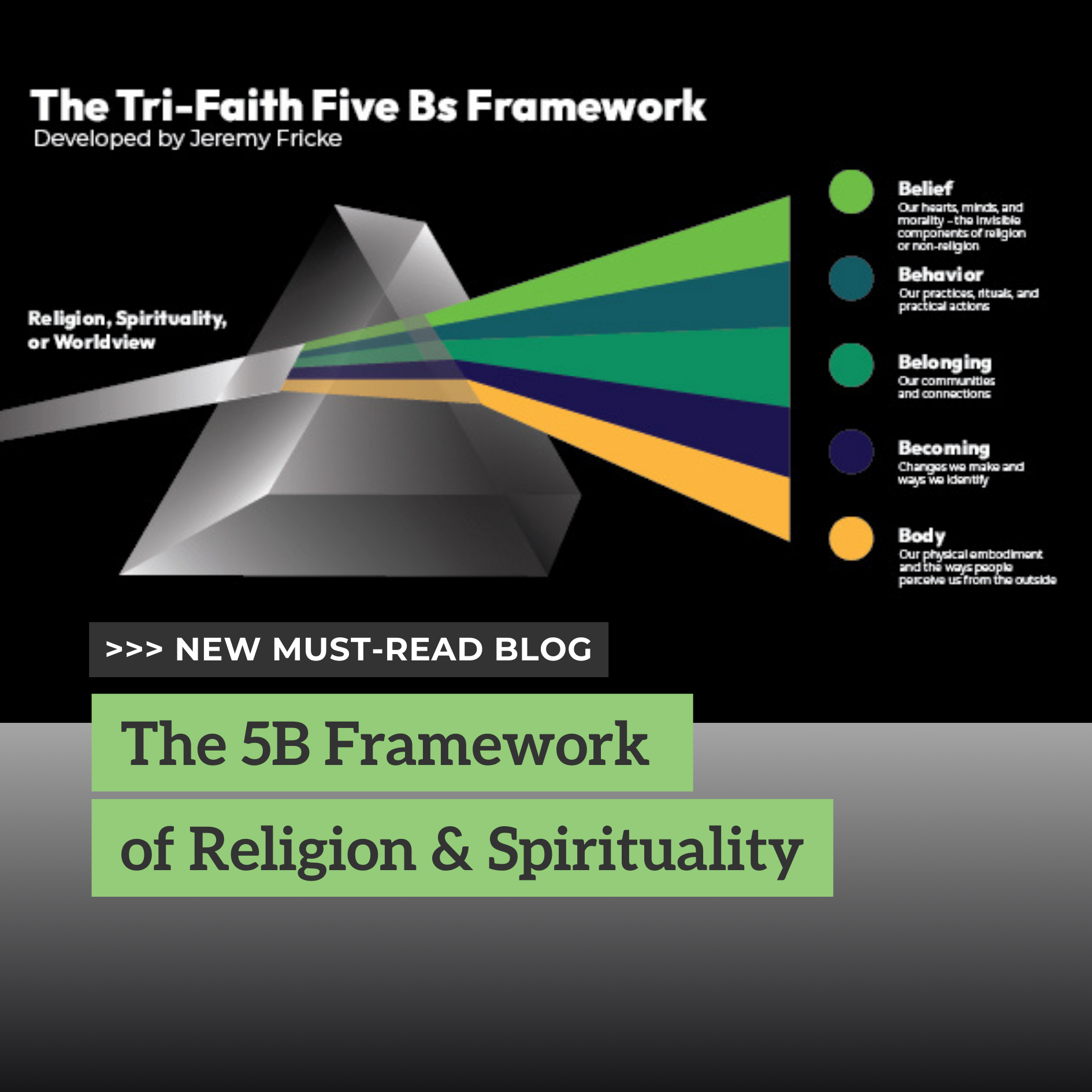Welcoming the Other within our Own
-
 Amanda Crichlow Silva
Amanda Crichlow Silva
- Published on

This Dvar Torah (a reflection on the parashah of the week) was given on September 27th, the Shabbat before Rosh Hashanah, the Jewish New Year.
This week’s Torah portion, Nitzavim, tells us of the end of Moses’ leadership. He reminds the Israelites that God’s covenant speaks not only to those present in that moment, but also for all generations to follow. Further there is a warning to the people to follow the commandments and not to fall for the ways of other nations. While Moses reassures the Israelites of God’s continued blessings through observance of the mitzvot. This parasha walks the line of comfort and fear – carefully weaving the threats of the world around the Israelites and the beauty that rests in our tradition and our future. Moses is coming to the end of leadership. Like a parent sending their child to college or a leader uplifting the next generation to take charge, Moses must also rest in the unknown of what will become the people of Israel, but he has the faith that through his teachings and communication with God that the future of the Jews will be okay.
This story resonates with us today.
We continue to see a downward trend of young people engaging with formal religion. Today we see a global threat of white supremacy and antisemitism on the rise. We continue to see communities of color, LGBTQIA folks, and those with disabilities and illness continually denied fair and equal treatment under the law. Within our own movement, folks that are in interfaith marriages cannot become clergy, due to having a non-Jewish partner. Making it hard for interfaith families to see an example of their Jewishness from the bimah.
But what does that have to do with us in this room? Many of us here care very deeply for the continuation of engaging young people in Jewish life. I am standing before you as a millennial, who cares deeply about whether other young Jews continue to choose to actively live as Jews within our troubled society. Tonight, you are here because you connect with prayer that happens in this sanctuary. It is a privilege to be able to be here in this room, to be able to not work on Shabbat, to take a moment to breath. Because we are a people that has built a sense of identity based on community and peoplehood, let us take a moment to think of how we have personally worked to extend and broaden our community.
- Think about the last time you invited somebody to a Shabbat dinner.
- Or when somebody sat by themselves, did you offer a warm and welcoming smile, did you sit next to them?
- If you don’t have Jewish family here, do you have a place to go for the holidays?
- How often to you rest in comfort of the unknown instead of anxiety or fear?
Over the course of Elul, we have taken stock of 5779, the year just ending; our celebrations, achievements and our downfalls. Elul is my favorite month of the year, as somebody that is constantly thinking about my actions and how I have fallen short in different ways. Elul brings me a sense of calm… a lull in everyday life and an extended period of reflection. Starting from a young age, I was hyper aware of my actions. However, sometimes it seems that people doubt the forethought I take before acting. Firstly, as a Latina I have constantly been aware of my otherness, the way I speak and the movements of my body. I was aware of that otherness when other Latinos saw my sister and I with my Mexican mother and white father. There was judgement in their words and their glances. When white folks realized that I was Mexican they erased my heritage, because I was not a recent immigrant and I speak very little Spanish. As a Jew, I am reminded of the white, Christian supremacy throughout our society from advertisements to the continual dismissal of religious accommodations for Jews, Muslims, and other minority religions. And as a Jew and as a Latina, I am reminded that I am still an “other” because I’m not only proudly Jewish but also proudly Latina.
In 2018, I had the extreme honor of participating in the Union for Reform Judaism’s Jew v’Nation Fellowship for Jews of Color. While the definition of “Jews of Color” is complicated and nuanced, for these purposes “Jews of Color” are defined within the racial structure of the United States – black, Latino, Asian, and Indigenous peoples were invited to participate. Sitting in a room with 16 other non-white Jews was the first time that I felt my lungs expand and take a deep breath of belonging. We discussed issues of gun violence, immigration, healthcare, poverty, and incarceration. For the first time my Jewishness and my Latino background felt together as one. We could laugh, cry, and stand tall together. I realized that the way I told my familial story changed when I was in the Jewish community, but not with this group. For the rest of the year I struggled with finding how I could live that authentically in Omaha. I learned from my peers that many of them had been mistaken as food servers or cleanup crews at synagogues where they have been members for years. Some people who are highly qualified Jewish professionals were passed over for promotions within the synagogue for a less qualified individual that came from a white, Jewish family. Many people witnessed the treatment synagogue staff that are people of color within their holy space. All of these things remind us of our otherness within our home.
While this is a painful reality of an issue of racism and implicit bias within our own community, there is also a really beautiful change that is taking place within our larger community. Jewish movements, particularly the Reform movement, are continuing to grapple with this challenge as a community. Hebrew Union College – Jewish Institute of Religion is working on a more inclusive Intermarriage policy for upcoming students. We continue to grow more and more diverse, which highlights the amazing ways that Judaism is practiced by people all over the world. The tallit that I wear tonight was given to me by April Baskin, the immediate past president of the URJ’s Audacious Hospitality. The fabric is from Senegal where she is now living, to connect with her roots. But for me it represents a Judaism that is growing and moving between cultures and encompasses people of all backgrounds. It challenges us to think of what “is Jewish”. Not only do we have the beautiful traditions of Ashkenazi and Sephardi Jews, but we are experiencing a fusion of cultural foods, song and dance. Michael Twitty, a black Jewish chef, writes about Kosher Soul Food and Molly Yeh, an Asian Jewish chef with her own show on the Food Network. We even have the Disney Channel not only having its first Jewish princess, but she is also a Latina, a point of pride for people like me. Jews of Color academics are carving a space within academia to share the stories and experiences of other Jews of color within the context of Jewish Studies, Sociology, and History. This representation IS important.
If all souls were at Sinai, and Moses reminds the Israelites that the commandants are not only theirs to uphold, but those of future generations, let me tell you that our future is bright. It is innovative and it challenges the norms of what it means to be Jewish today and tomorrow. My challenge to us as we enter into 5780, is not to radically change what Temple Israel is, but to think of our actions and words and how do we make this a more welcoming congregation to the stranger among our own people and those of other nations. Diversity is nothing new to us. Let us remember that Moses’ wife, was both from a different tribe and is described as having dark skin according to rabbinical sources. And we have always been influenced by the society around us from German Jews, Ethiopian Jews, and Jews from Iraq and Syria, to the Jews that fled Spain and later Nazi Germany to head to Central and South America. We meld and bend to society around us, while holding true to our history and beliefs.
Much like Moses at the end of Deuteronomy, we are at a transition point of our people. Our leaders must have faith that their lessons have impact, and we must enact the skills to continue to live and breathe our beautiful traditions that those leaders have taught us. It may not look exactly like the Judaism we practice here right now, but it will be a Judaism that continues to grow and thrive, and we too will have to pass down what we have learned and the generations after us will continue breathe life into our people, much like God breathed life into Adam.
In closing, I think of one of our congregation’s great matriarchs, Toby Feldman, who welcomed everybody as if they were family from the moment they passed the doors. She helped to shepherd visitors, potential members, and current members to a sense of belonging within this building. May we all continue to carry her light with us for years to come. May her memory be for a blessing.
Shabbat Shalom and Shana Tova.
Spread the Word

